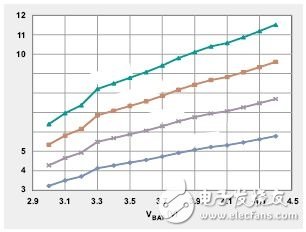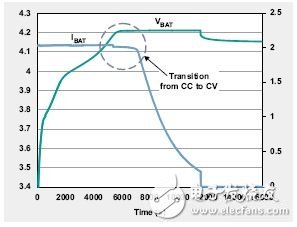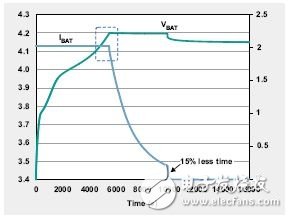The functionality and performance of portable devices has improved dramatically over the past few decades, and mobile phones are a good example. They have become more complex, not only capable of performing many basic tasks, but also working like computers. More functionality has turned smartphones from a call-only device to a multi-purpose portable device, which has made their demand for power consumption unprecedented.
The internal battery pack is the primary power source that stores power and powers the portable device circuitry. The battery charger IC is responsible for charging the battery pack safely and efficiently. In addition, they must control the power supplied to the system to ensure that the device will function properly when plugged into the wall. The battery pack needs to be able to store not only a large amount of power but also a short time without affecting the weight and volume. Higher charge and discharge currents combined with smaller physical dimensions make the battery pack susceptible to physical and thermal stress damage. Therefore, battery charger light is not enough as a simple stand-alone charger.
To ensure reasonable charging times and safe charging conditions, the battery charger IC needs to be highly flexible because it must ensure that the system is always powered and that the battery and system are properly protected. This article will not only discuss single-cell charger solutions, but will also detail the performance and limitations of small high-power application chargers.
Single Battery Charging Solution Overview
Rechargeable batteries are critical to electronic devices such as mobile phones and wearable electronics. Charging circuits must not only be carefully designed, but also largely depend on three factors: battery chemistry, power level, and system load. Different battery chemistries require different charging methods. The power requirements of the application directly affect the cost and size of the charging system. Finally, you must consider the system power requirements, whether you choose a power path or a non-power path.
Lithium-ion batteries are becoming the first choice for many portable applications, mainly because they not only provide higher capacity with smaller size weight, but also have low self-discharge and high cell voltage (usually 3.6V). A battery pack design that only has one battery. Despite the above advantages, lithium ion batteries are also susceptible to stress damage. They need special consideration for charging current, voltage regulation, low current charging level and temperature monitoring.
There are two basic charging methods: linear charging and switch mode charging. Switch-mode charging minimizes power consumption over a wide range of AC adapter voltages, but takes up more board space and adds complexity. In addition, switch mode applications are typically more expensive than corresponding linear applications. The linear charger is small and ideal for noise sensitive devices. However, they are as efficient as switching mode devices throughout the charging process.
When choosing a charging method, the designer should consider the cost, space, bill of materials (BOM), and efficiency (heat load). Different system requirements, there will be different battery charger solutions, from simple independent chargers to embedded chargers that can also power the system. System requirements include but are not limited to:
â— Dynamic Power Path Management (DPPM) requirements ensure that the system can be turned on immediately when the battery is exhausted or the battery is disconnected.
â— Low FET RDS(on) for battery and system paths to ensure acceptable overall efficiency and thermal management.
â— High charging current, not only supports high-capacity battery packs, but also shortens charging time.
â— Input Voltage Dynamic Power Management (DPM) that supports any adapter and/or USB port limitations.
Power requirements (adapter restrictions)
Most smartphone adapters today are calibrated to a maximum output power of 5 to 10W. Figure 1 shows the USB port or adapter input power required for different charge current levels. For a charging current of 1.5A, as the battery voltage rises from 3V to the highest voltage, the required power supply can rise linearly from 3W to 5W. For a 3A charge rate, the input requires up to 12W of power for the entire charge cycle. In this case, depending on the state of charge of the battery, the 5W or 10W adapter may be destroyed, causing the system to crash. To avoid this, the charger has some type of protection to reduce input power.

Figure 1. Input power required for different charging currents
TI's bq24250 and other battery chargers support Dynamic Power Management (DPM) to monitor the input voltage (VIN_DPM). During normal charging, if the input supply does not support the programmed or default charging current, the input voltage will drop. If the input voltage drops to the designer's VIN_DPM threshold, the charge current will decrease. This limits the power supply to the input supply and prevents the input voltage from dropping further. This feature ensures that the IC is compatible with adapters with different current capabilities without any hardware changes.
Charging time
As mentioned earlier, the charging time depends on the battery capacity and charging rate. The easiest way to reduce charging time is to speed up the charging rate. However, if the battery charging rate exceeds 80% (0.8C) of the total battery capacity, stress will be generated on the battery. This will shorten the battery life and may also damage the battery pack, with catastrophic consequences. TI has developed a charge cycle optimization technology for the charge cycle that reduces charging time at a given charge rate compared to other solutions. Lithium-ion battery charging cycle mainly includes three stages: the pre-charge (small current), fast charge (constant current) and gradual weakening (constant voltage) transition between the same phase is not ideal for many switch mode chargers . Figure 2 highlights the transition from constant current to constant voltage in the original charger circuit. There is no significant change in voltage and current, which can cause loss of time and power during the charging cycle.

Figure 2: Original charger (does not support time optimization technology)
TI's Li-Ion battery chargers use time optimization techniques to improve the transition between these different phases. Figure 3 shows the same charging cycle as the battery and charging conditions used in Figure 2. Charging time has been reduced by more than 15%. This transition is much more intense on the latest chargers, which take longer in the fast charge phase and then switch to the gradual weakening phase. This allows the battery pack to get more power at a faster rate, thus reducing charging time without increasing the charging rate.

Figure 3: Switch Mode Li-Ion Battery Charger
LED Street Lights offer longer operating lifetime, lower maintenance requirements and cost reductions over other bulbs. G-Lights has a wide variety of LED street lights for sale. LED street lights by G-Lights offer a long life span and extreme reliability, both important characteristics for street light selection. When you are interested in installing new LED Street Light, we offer a wide selection of LED street lights to choose from. LED street lighting comes in a variety of light distribution options, which is important in achieving the desired light cast. 5 year warranty provides you a good support for the project.
Led Street Light,Led Street Light Price List,Big Led Street Light,Led Street Light Price
ZHONGSHAN G-LIGHTS LIGHTING CO., LTD. , https://www.glightsled.com